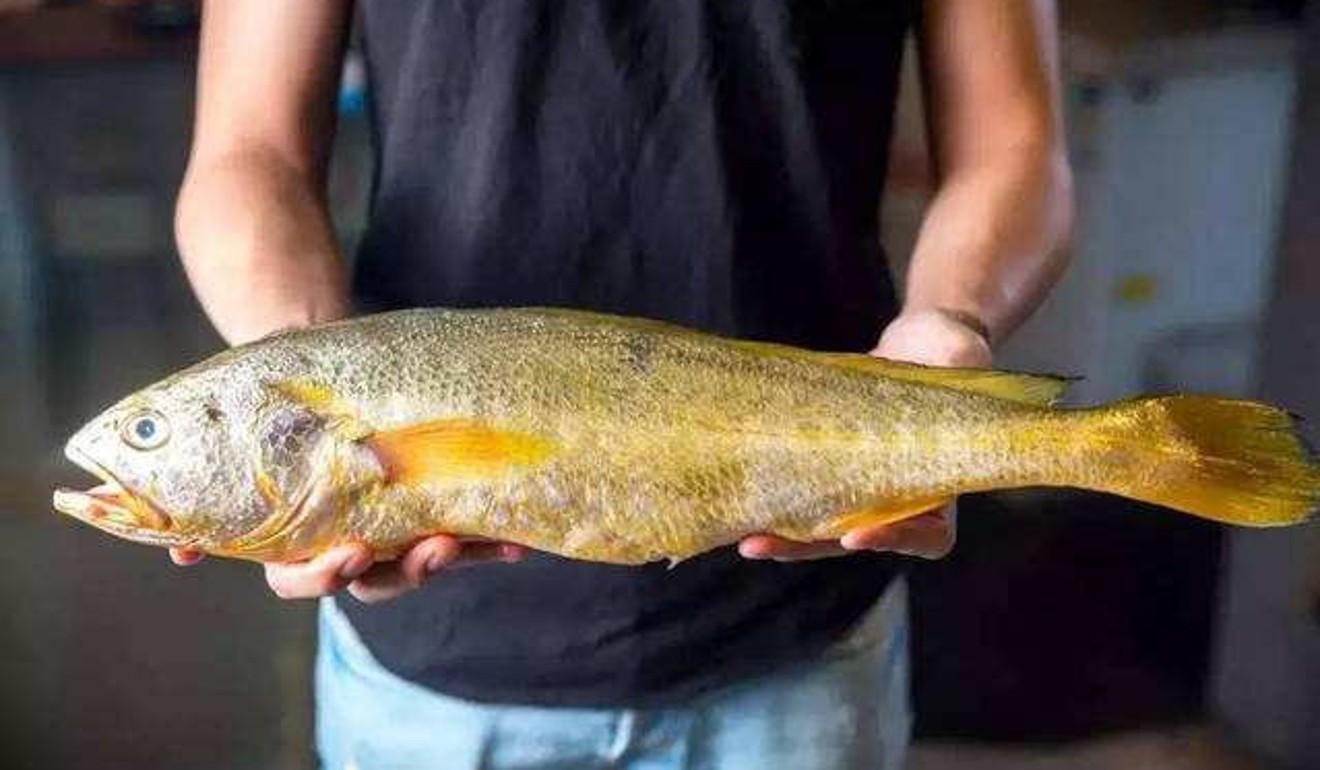New push to revive China’s wild yellow croaker fish stocks after Chinese paddlefish goes extinct
- A team in Zhejiang is on a mission to ‘train’ young croakers for life in the open sea with hopes that wild population can grow

Chinese scientists are stepping up efforts to protect yellow croaker fish stocks in the East China Sea by preparing fry for release into the wild, state news agency Xinhua reported on Monday.
News of the conservation plan came about two weeks after the Chinese paddlefish, a species indigenous to the Yangtze River and one of the world’s largest freshwater fish, was declared extinct, prompting a public backlash against dam-building, overfishing, heavy water traffic, pollution and other human activities on Asia’s longest river.
The yellow croaker is the most popular sea fish on tables in China, and most of those sold at market are farmed. Wild stocks have dropped dramatically over the past four decades because of overfishing, according to experts.
Last year in the eastern province of Zhejiang, the provincial science department’s rural affairs office launched a project to try to ensure there were 1,000 tonnes of wild croakers in the East China Sea within three years, the report said.
“Wild yellow croaker fish are top among China’s four major sea fish. The [annual] harvest was more than 10,000 tonnes for many years and it was a common dish,” Yan Xiaojun, an ocean biologist from Zhejiang Ocean University, was quoted as saying. “Our generation has the responsibility and obligation to restore wild croaker resources.”
Yan and his team chose an area near the Zhongjieshan archipelago as the base for preparing yellow croakers for the wild.
If the croaker’s survival rate was one in 100 then between 20 million and 200 million fry had to be released to meet the goal of 1,000 tonnes in three years, Yan said.
The team would begin by isolating an area of the sea with biodegradable nets where the fry would be regularly fed. The nets would keep big predators out but would allow smaller fish in, replenishing food supplies, Yan said.
While the croakers’ swimming and hunting abilities would improve in this environment, the net would degrade within three to five months, giving the fish time to get used to the open sea.
Zhu Huatan, an inspector with Zhejiang’s agriculture and rural affairs department, said the preparing the fish was a difficult task because they took many years to mature.

Provincial authorities made similar efforts in 2003, but after several years there was no clear sign of a revival in the croaker population, Zhu told Xinhua. He said he was concerned about whether the project could meet the high expectations.
Lu Weiqun, a professor from Shanghai Ocean University, was also not optimistic. Xinhua quoted him as saying the croakers were not fast swimmers and he doubted that the fry released by humans could feed in the wild or escape predators.
Purchase the China AI Report 2020 brought to you by SCMP Research and enjoy a 20% discount (original price US$400). This 60-page all new intelligence report gives you first-hand insights and analysis into the latest industry developments and intelligence about China AI. Get exclusive access to our webinars for continuous learning, and interact with China AI executives in live Q&A. Offer valid until 31 March 2020.